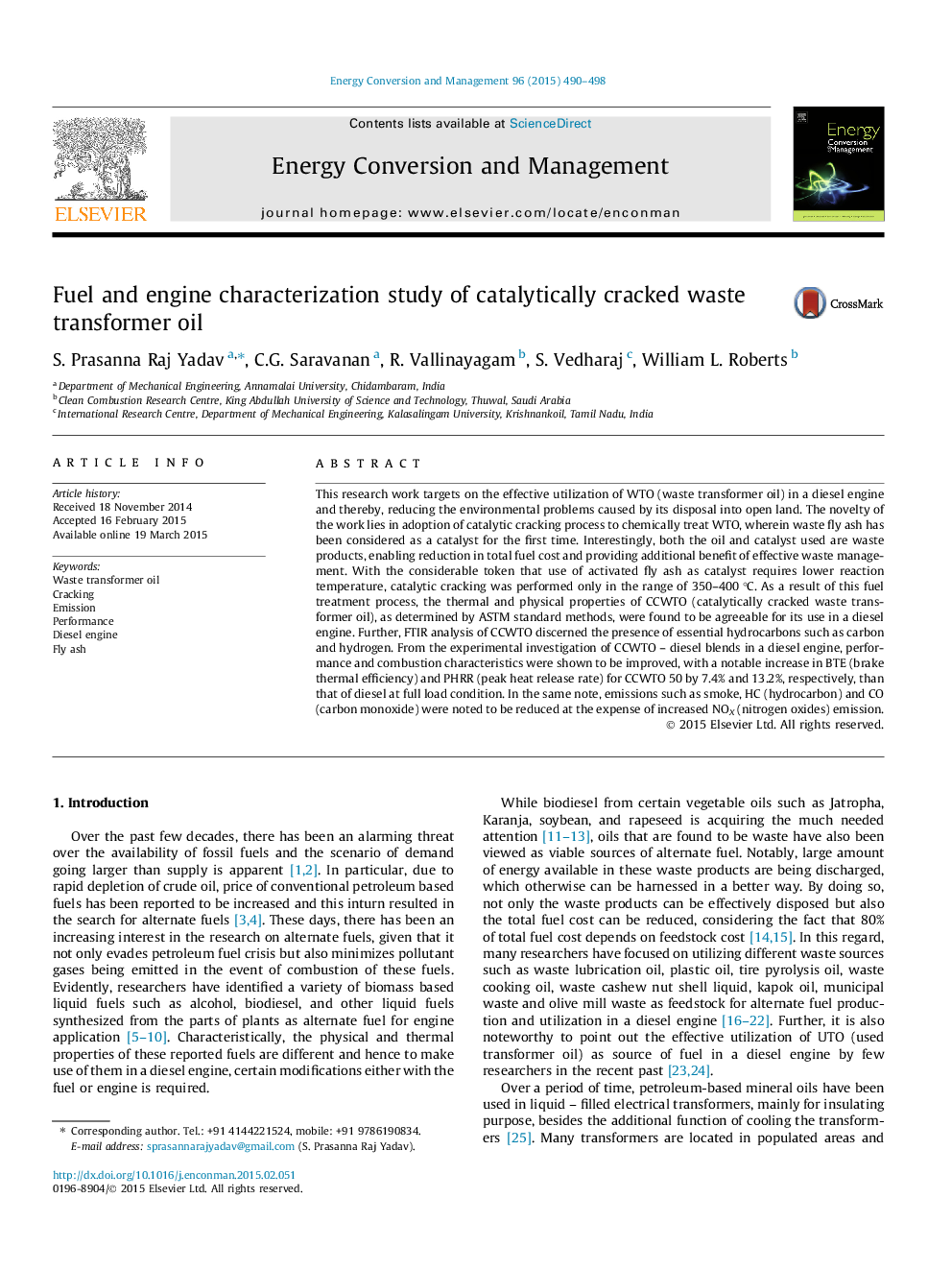| Article ID | Journal | Published Year | Pages | File Type |
|---|---|---|---|---|
| 763605 | Energy Conversion and Management | 2015 | 9 Pages |
•Waste resources such as WTO and waste fly ash have been effectively harnessed.•WTO has been catalytically cracked using fly ash catalyst for the first time.•Characteristics of a diesel engine were evaluated for CCWTO-diesel blends.•BTE and PHRR were increased by 7.4% and 13.2%, respectively, for CCWTO 50.•HC and CO emissions were reduced for CCWTO 50 with the increased NOX emission.
This research work targets on the effective utilization of WTO (waste transformer oil) in a diesel engine and thereby, reducing the environmental problems caused by its disposal into open land. The novelty of the work lies in adoption of catalytic cracking process to chemically treat WTO, wherein waste fly ash has been considered as a catalyst for the first time. Interestingly, both the oil and catalyst used are waste products, enabling reduction in total fuel cost and providing additional benefit of effective waste management. With the considerable token that use of activated fly ash as catalyst requires lower reaction temperature, catalytic cracking was performed only in the range of 350–400 °C. As a result of this fuel treatment process, the thermal and physical properties of CCWTO (catalytically cracked waste transformer oil), as determined by ASTM standard methods, were found to be agreeable for its use in a diesel engine. Further, FTIR analysis of CCWTO discerned the presence of essential hydrocarbons such as carbon and hydrogen. From the experimental investigation of CCWTO – diesel blends in a diesel engine, performance and combustion characteristics were shown to be improved, with a notable increase in BTE (brake thermal efficiency) and PHRR (peak heat release rate) for CCWTO 50 by 7.4% and 13.2%, respectively, than that of diesel at full load condition. In the same note, emissions such as smoke, HC (hydrocarbon) and CO (carbon monoxide) were noted to be reduced at the expense of increased NOX (nitrogen oxides) emission.
